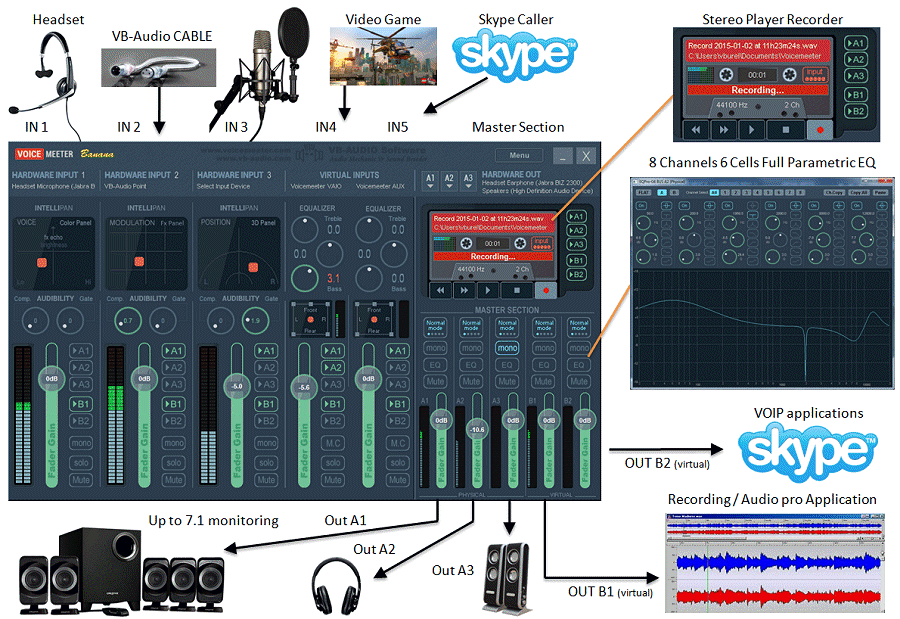Ok, yes I now understand 100% what you're saying.
I guess one of the other requirements that I have not mentioned is that we have specific scenes in OBS where we do not want the USB Mixer audio going out to the stream (so that we can discuss internally among ourselves while media is playing), so we remove USB audio from those scenes. So OBS provides us a way to enable/disable USB mixer audio based on the requirements of the scene.
If we use Voicemeeter to send audio directly to our streaming service, thereby bypassing OBS but allowing monitoring of OBS sources, then we will be sending 100% of our mixer audio 100% of the time, unless we introduce a 'talk-back' feature to our local flow, which we currently cannot do.
We really appreciate your input!!
I fully understand that we are an edge case in what we are trying to achieve and the tools we are using to achieve it. If OBS would allow us to both host remote guests and highlight chat comments on-screen from our various channels (the 2 features from StreamYard that we adore), then I would 100% prefer not to include an external streaming service into our flow.
Hey there LivingRoomLive,
I have gone through a lot of iterations of this myself and would recommend the following:
1.) Use Voicemeeter Banana (or Potato) to be the first place to send all of your audio inputs. This includes your Xenyx USB Mixer (primarily Mic, no?), your browser (YouTube videos?) your computer's music player (Spotify or other), etc.
2.) Create two mixes in Voicemeeter: "mic" and "other audio". Use the hardware outputs in Voicemeeter Potato H2 (Mic) and H3 (computer audio mix). Send the "other audio" mix to your USB mixer as well (so you can hear it through your headphones via mixer headphone monitor jack).
3.) Send H2 (Mic) and H3 (audio mix) to OBS as separate audio inputs using virtual audio cables.
4.) Set your scenes in OBS to either include your H2 (Mic) and H3 (audio mix) or H3 (audio mix) ONLY so that you allow yourself to conduct internal chats by selecting the appropriate scene within OBS.
5.) Send your output from OBS to Streamyards using a virtual audio cable as your monitor out and virtualcam as your video out.
FYI I recommend using the H1, H2, H3, H4, H5 output channels on Voicemeeter Potato because of the built in capability to apply sync delays on them which you may find you need to use. Voicemeeter does not support audio sync delay on B1, B2, and B3 (virtual outputs).
This avoids the problems you mentioned:
1.) Hearing an echo of yourself. Your mic audio will go a.) Mic > USB Mixer > Voicemeeter > OBS > Streamyard and also b.) Mic > USB Mixer > Headphones. You won't hear a on your headphones because you will not be monitoring OBS in headphone.
2.) Can't send "all sounds but mic" to stream. You can by selecting the appropriate scene in OBS.
3.) Can't hear video clip sounds in headphones. You will hear them in this pathway: Chrome > Voicemeeter > Voicemeeter output to USB mixer > USB mixer monitor > Headphones. Simultaneously they will be sent to OBS using a different Voicemeeter output.

